
Monster Hunter World: Iceborne Review
It’s hard to believe it’s already been a year and a half since Monster Hunter: World’s release.
For all of its warts, its numerous small issues, Monster Hunter: World had already become my favorite title in the storied franchise. Capcom brought Monster Hunter back to consoles in a big way, fulfilling their goal to one day make the series as popular in the west as it has been in Japan for over a decade. It goes without saying that the expectations that players had for the title’s Iceborne expansion have been at a fever pitch since it was first revealed – how many monsters would return? What new monsters and subspecies might we get to hunt? Exactly how big is the Hoarfrost Reach – is it fun to explore?
Would Iceborne be the expansion that Monster Hunter: World deserves? Can an expansion hope to match the impact that World initially made? Well, let me just say this – in my 10 years of playing Monster Hunter, I don’t think I’ve ever been as excited for the series’ future as I am now.
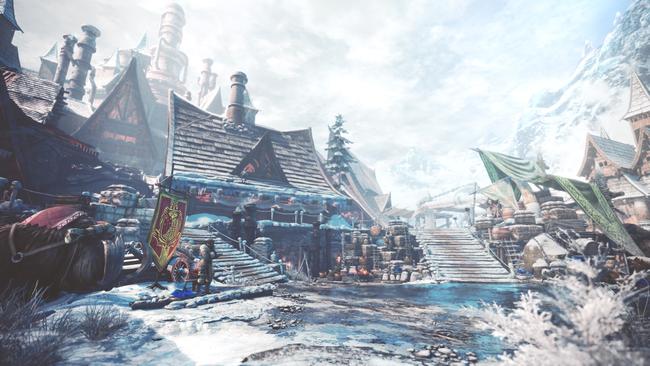
Players can transition to Monster Hunter World: Iceborne's content immediately upon completing World's previous final boss, Xeno’jiiva. Your Hunter Rank (HR) will be unlocked, and for players that hadn’t already completed the two Assigned Quests that gated HR progression, they will be marked as complete, as the addition of Master Rank (MR) makes their existence a little bit redundant. A quick expedition, a few cutscenes, and you’ll find yourself exploring the Hoarfrost Reach in no time. Moments after, you’re free to explore the new hub in Seliana – a cozy village nestled in the hills neighboring the Reach.
Unlike Astera, which featured multiple layers which could make it cumbersome to move around in, Seliana has most everything is situated much more conveniently -- every vendor and facility lies only a short distance away from each other. Despite the design for efficiency, it manages to accomplish this without necessarily feeling small, or cramped – except for the occasional cutscene. It’s easy to imagine nobody wanting to return to Astera for much of anything once you’ve acclimated to Seliana’s new charms. This is especially true once you consider the overhaul made to Seliana's Gathering Hub.
Monster Hunter: World’s basegame Gathering Hub was small, cramped, and required players to leave it in order to access any of the other facilities in the game – meaning that unless you specifically wanted to hunt Kulve Taroth, chances are most players wouldn’t set foot in the Hub during multiplayer, just accepting quests from either the Handler or one of Astera’s many billboards. It was, quite simply, a hassle to use - and made the fact that players could only see others in the same session when they were both in the Gathering Hub all the more obvious. Seliana’s Gathering Hub fixes, quite literally, everything that was wrong with it.
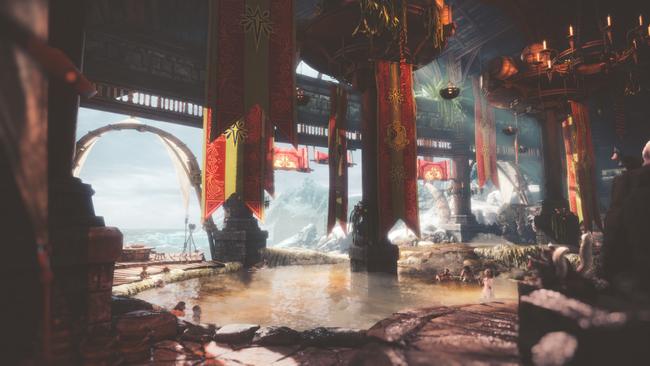
Seliana’s Gathering Hub is larger, features vendors for every facility in the game aside from the Tailrider Safari, and even allows for you to visit the Smithy without sitting through a loading screen. Unless you specifically want to use the Tailrider Safari, which is nowhere near as essential as the Harvest Box, or want to make use of the new Steamworks, there’s little to no reason not to use the Gathering Hub when playing in multiplayer. It’s a staggering, night-and-day difference when compared to the state of affairs in the basegame. Clearly, Capcom must’ve learned a thing or two from the mods on the PC version that managed to incorporate every vendor into one spot on the map.
Neighboring Seliana, Iceborne’s massive primary new locale - the Hoarfrost Reach - awaits the hunters that dare attempt to tame it. Forests, glaciers, a series of caves below a cliff of mountains – it feels almost like a conglomeration of all of the series’ previous ice and snow-themed areas. For the first time in Monster Hunter: World, players will be forced to gulp down Hot Drinks in order to maintain their stamina, much like other games in the franchise. Alongside this change in biome comes the additions of new environmental features for players to experiment with – while staples from the base game such as Paratoads, falling rocks, Wedge Beetles, and more do also return.
There’s a lot to say about what the new map offers, but part of the joy is seeing it for yourself – and it’s not just the new environment that makes Iceborne such a blast to play, but also the changes made to weapons and how monsters can be fought. Capcom hasn’t been strangers to slightly changing up weapon movesets for a Monster Hunter expansion before, and Iceborne is no different. While not every weapon has seen drastic changes to their playstyle, many have – and as far as I can tell, no weapon is left untouched. Hunting Horn sees the introduction of flashy Echo Attacks, by far one of the most notable changes, and Greatsword can incorporate the slinger into its True Charge Slash combo. Regardless of your weapon of choice, every hunter will also get to use the new Clutch Claw system. The extent that which each weapon uses this new mechanic differs, but it certainly something every hunter will need to master in order to efficiently fight the Reach's most dangerous monsters.
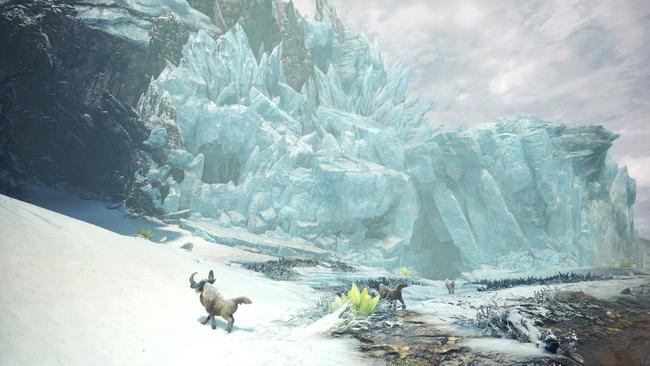
The Clutch Claw allows for a player to grapple directly onto specific body parts. It’s not the same thing as mounting – if the monster attacks using that specific body part, you’ll take damage and be flung off – but instead offers its own specific uses. The easiest way to use the Claw is during a new stunned state that monsters will occasionally exhibit. They’re unique from the previous stagger or topple that players have been used to, signified by the monster almost drooling while hunched over in an odd stance. This is your opportunity to grapple onto them. Once latched on, there are a few options depending on the equipped weapon. Heavier weapons can simply damage the body part you’re attached to, weakening them and offering players extra damage against that body part for a short period of time. Smaller weapons will still deal damage to a part, but won’t weaken it – instead, they'll forces the monster to drop slinger ammo for the hunting party to use.
If you grapple onto a monster’s head and have ammo in your slinger, you can attack the monster to steer them in the direction you want them in, to then send them crashing into a wall or off a ledge thanks to a face full of slinger ammo. The resulting impact itself will deal a load of damage to the monster, while simultaneously toppling them – leaving them open to further attack by the party.
All of these options are interesting and have their places. Since monsters will only be stunned the right way to safely take advantage of the feature a handful of times per hunt, and you can’t direct a monster when they’re enraged, it definitely feels powerful—but not exploitable enough to feel overpowered, especially when considering some of the other changes present in Master Rank. Anyone that has played another Monster Hunter with “G Rank” already expect monsters to have new moves, and the same is true in Iceborne. Adding another wrinkle, Flash Flies and Flash Pods aren’t nearly as exploitable in Master Rank; you can’t just chain them together to keep a monster perpetually stunned, as each flash will incite a relatively long cooldown before the monster can be affected by another.
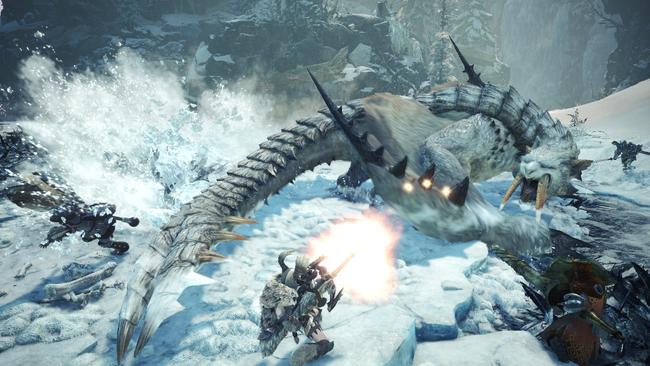
All told, the combat changes are minor enough to still feel familiar, while introducing enough variety to make everything feel notably fresher. Of course, your weapon of choice is only half the battle – literally. Much like with other Monster Hunter expansions, Iceborne introduces and re-introduces a variety of new monsters, subspecies, and Variant monsters. Many of these now returning monsters are fan favorites, while new ones like the water Elder Dragon Namielle or the flagship monster Velkhana utilize attacks and combos never before seen in the series history. Every new monster in Iceborne, returning or debuting, all are joys to fight and feel distinct from anything else in the franchise.
Subspecies and Variant monsters, of course, are always going to be a little bit harder to parse. When the series was still very young, monster Subspecies’ tended to be much more derivative than some of the ones introduced in later titles. Thankfully, Iceborne continues the trend of subspecies feeling notably distinct from their non-subspecies counterparts. Not all of the subspecies that Iceborne adds to Monster Hunter World originate here, however, and it is fairly easy to tell when one is entirely new versus one that had been created before World existed. Either way, all of the subspecies that Iceborne adds feel different enough from their base counterparts, and means that their fights will still feel relatively new, even if they share much of the same moveset.
Variant monsters, unlike Subspecies, are meant to mostly be the same type of fight as the original monster. Generally, they start off in a state that is rather similar to the base monster’s “rage” state and introduce new attacks and mechanics from there. There’s a little more than half a dozen Variant monsters in Iceborne, and with only a couple of exceptions they more or less replace the base monster wholesale in Master Rank; many of these Variants are introduced either late in the story, or even only once you’ve reached the post-game.
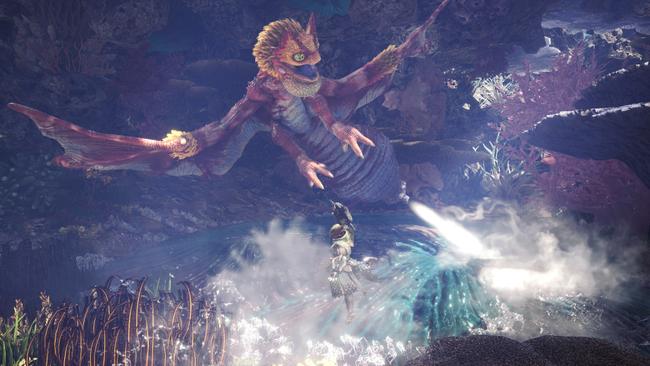
Perhaps the one major problem that I have with Iceborne’s story is, unfortunately, one that has returned from the basegame – you still cannot play through the story with a friend that is at exactly the same point in the story as you are, without contending with confusing cutscene mechanics. Despite all of the strides made in the goal of improved quality-of-life regarding Seliana and the new Gathering Hub, it's disappointing to these this issue return. This is especially frustrating, as during a multiplayer session with another reviewer while helping him fight the final boss, I actually managed to see one of his cutscenes despite having the standard restriction still in place for every other Assigned Quest in the game. It really makes me wonder why Capcom couldn’t have had shared cutscene viewing options elsewhere. Nonetheless, there is a silver lining – one of the main reasons that this deficiency was so frustrating with the original release, was that after the final boss, there wasn’t really anything else for you to explore, for you to discover with your friends. This is no longer the case in Iceborne.
While Iceborne’s story is only slightly shorter than the base game's, the post-game has been overhauled and is now significantly more interesting. No longer will you just be grinding the same Tempered monsters upon the stories completion for decoration drops. Instead, the majority of Iceborne’s endgame revolves around The Guiding Lands – a new location that is split into 4 sections, representing biomes for the Ancient Forest, the Wildspire Wastes, the Coral Highlands, and the Rotten Vale. With the exception of a few post-game Assigned Quests, every time that you visit the Guiding Lands will be as an Expedition – each region has a level attached to it, and hunting monsters from each of these biomes will inevitably strengthen the monsters that will spawn from that particular biome, with the caveat that leveling one region will weaken the others.
While hunting in The Guiding Lands, you’ll occasionally find Special Tracks, either by killing monsters or by discovering Signs of a Turf War while exploring the environment. These tracks can be any monster that could potentially spawn in the Guiding Lands, based off of the levels that you have reached for each biome – and will require you to “analyze” them by hunting monsters that closely match their species, such as Bird Wyverns, Fanged Wyverns, Elder Dragons, and more. This includes monsters that you simply do not see before the post-game. There’s about half a dozen of them, and unsurprisingly – they’re brutal to fight. Some of them won’t begin to spawn until you’ve increased a region’s level past the point when Elder Dragons will begin to spawn, and many of them you won’t even have the chance to face until you’ve raised your Master Rank to a cap, and then cleared an Assigned Quest to uncap it again, raising the maximum level obtainable for each region.
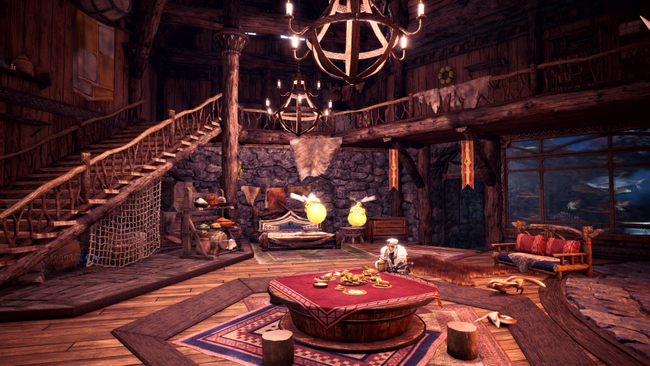
Even if that was all that Capcom added to Iceborne’s endgame, it would already be a significant enough improvement to drastically impact how Monster Hunter: World is played once the credits roll. You’ll still inevitably reach a point where the new monsters stop, and you’re just hunting monsters you’ve already fought before – but there are two things that the Guiding Lands offer that means that even once you’ve exhausted the new content, it won’t end up feeling stale.
Monsters hunted in the Guiding Lands drop unique materials, most of which are used when augmenting weapons. Tempered Monsters, for the first time ever, will also drop their own materials – which, of course, are also used when augmenting weapons, usually when upgrading an Augment’s level. Different weapons will require different monster parts, which is specially compounded for weapons without unique models. Those weapons can take advantage of Custom Upgrades, which incorporate parts from entirely different monsters to augment them in a way that won’t use precious slots that determine how many, and which type, of augmentations a weapon can hold at once.
The way that these slots work for Augmenting weapons, and how many each weapon can hold, has seen a few changes as well. Different augmentations require different numbers of slots, and one new upgrade that you can apply to augmented weapons is to increase the number of slots a weapon can hold. Since one weapons augmentations will require parts from multiple monsters, even endgame gear will have players tackling more than just Elder Dragons in order to level them up. There's more of a metagame when it comes to augmentation now, which ultimately allows for your weapons to get stronger than ever. However - the full process, while longer in some ways, isn't nearly as frustrating; you're rarely beholden to RNG drops to actively upgrade your weapons.
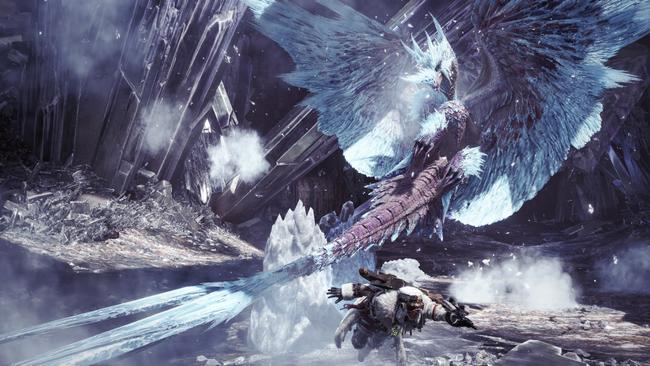
Instead of slogging through monsters, hoping to get a specific Streamstone drop for a specific class of weapon in order to Augment it, you now only require more general materials that drop from specific monsters. You still have decorations that you can grind, but now not only is there a lot more freedom for what builds you’d want to make at endgame - partly because of the increased variety in weapon trees – but you also aren’t beholden to nearly as much RNG while upgrading weapons. Now the only things that are truly RNG are decorations, and with increased slots on Master Rank gear, new Level 4 decorations that incorporate a wider variety of skills (including some new ones), and more – there are so many more ways of strengthening your character than before. Add in the dynamism that the Guiding Lands offer for the endgame, in addition to the returning Investigations, and hunting retains its luster for far, far longer than what was originally present in World.
Beyond a new region, new ways to hunt monsters, and new monsters themselves, there’s still so much more to talk about. For instance, you can now decorate your room besides just choosing which pets to display, you can unlock and equip cosmetic pendants to your weapons to show off in multiplayer, the researchers from the basegame have new missions for you, including the Lynian Researcher’s new photo minigame—and much, much more. The amount of content added with Iceborne is staggering. That’s without even considering the post-launch updates that Capcom is promising for the expansion. Monster Hunter World’s original roster saw six additions after release, as well as numerous Arch-Tempered monster fights to go along with them. We already know Rajang will be added to Iceborne next month, with more expected beyond that.
If Monster Hunter: World was Capcom ambitiously reinventing Monster Hunter for a current-generation home console, then Iceborne has been them aggressively laying the groundwork for the series’ future, confident in the game that they have created. It’s rare that you see a company pour this much time and budget into a simple expansion, let alone a little more than a year and a half after a game’s release. Not only is Iceborne the largest expansion that the series has ever seen, it no longer remains a question if Monster Hunter: World is the best that the series has to offer. With Iceborne’s release, there’s simply no contest.